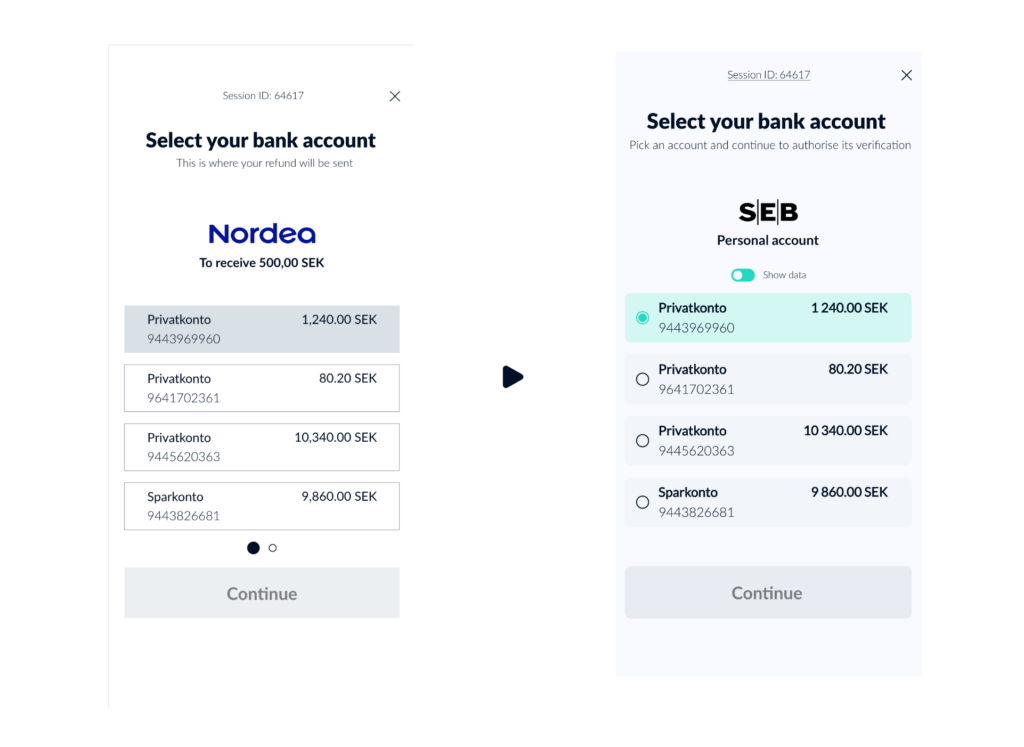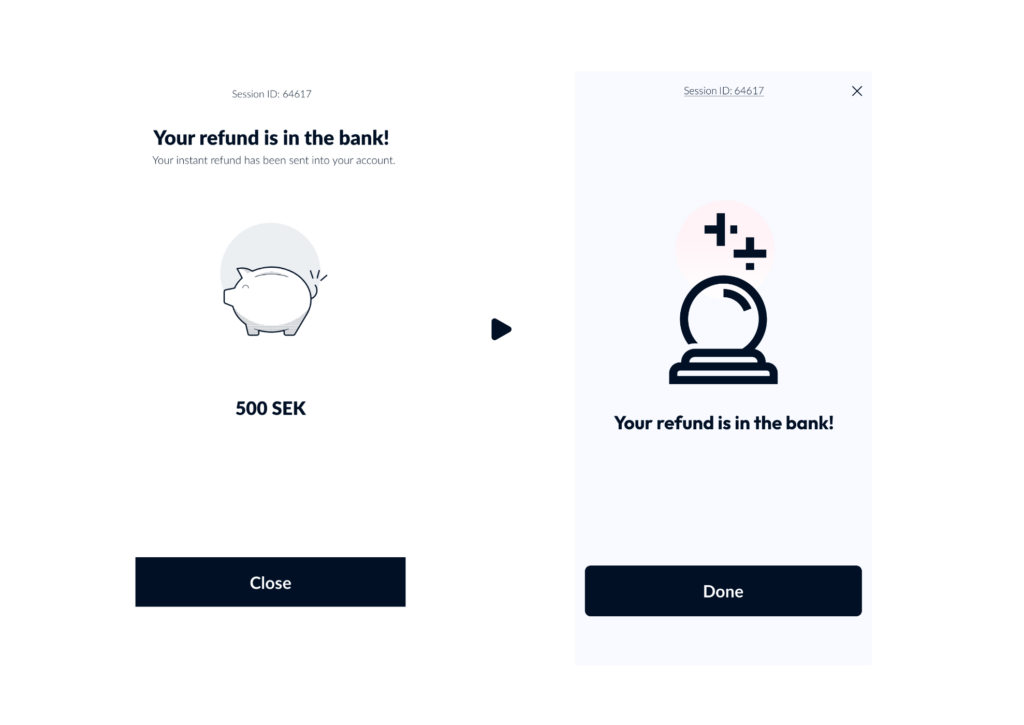Data | Payments
Empowering users for a lasting impact.

Building upon our previous discussion about addressing pain points and simplifying processes, we now shift our focus to an equally important aspect: ensuring that digital products and services are accessible to all individuals, regardless of their abilities. We can create digital experiences that are truly welcoming, intuitive, and empowering for everyone.
Ensuring accessibility in UX design is, for us, about creating a payment flow that can be used and enjoyed by everybody! Including individuals with diverse abilities.
Democratizing payments with accessible UX.
Designing for accessibility is a fundamental principle of inclusive design that aims to remove barriers and provide equal access to information and functionalities. We’ve highlighted some examples of how we work with inclusive design.
Addressing visual impairments is a crucial aspect of accessibility in UX design. It involves implementing features that make digital products and services usable for individuals with visual challenges. Back in May 2023, we introduced a couple of changes to the brand and our payment flow that address those issues.
Monocolour logo.

Increased visibility of interactions.

Thicker and monocolour icons.

Other things to consider.
- Motor limitations may require optimizing the design for keyboard navigation, ensuring that all functionalities can be accessed without relying solely on touch-based gestures.
- Cognitive disabilities can be supported through clear and concise content, avoiding cluttered layouts, and providing intuitive navigation.
- Additionally, considerations for users with neurodiversity, such as attention deficit disorders, may involve minimizing distractions, providing predictable interfaces, and offering customizable settings.
By integrating accessibility considerations into inclusive user research and testing, designers can create digital experiences that are both inclusive and user-friendly for individuals with diverse abilities.
Real-life testing of our payment flows.
Conducting usability testing with diverse user groups allows us to identify potential barriers, fine-tune designs, and ensure that the user experience is optimized for a wide range of users. Inclusive user research and testing help designers gain empathy, challenge assumptions, and create digital products and services that are not only accessible but also resonate with and serve the needs of a more diverse audience.
I did user group testing at a car accessory manufacturer when we realized that 9 out of 10 testers failed to configure our most popular products on our website.
That’s the curse of knowledge! We had failed to put ourselves in the shoes of a new user.

We recognize the importance of several UX principles to ensure a seamless journey for everyone. Through thoughtful consideration and extensive research, we strive to create a journey that welcomes and empowers every user, regardless of their background or abilities. Our dedication to democratizing payments reflects our commitment to delivering a user-centric experience that leaves no one behind.
In the end, let us remember that in the realm of user experience, the power to transform lies in our hands – to empower, to include, and to create digital experiences that leave a lasting impact on the lives of users worldwide.

Adi Pandzic | UX-designer
With many years of experience, Adi has worked in various fields of design where for the last 5 years he has expanded his passion for usability and user-centric design.
Connect with me on LinkedIn!